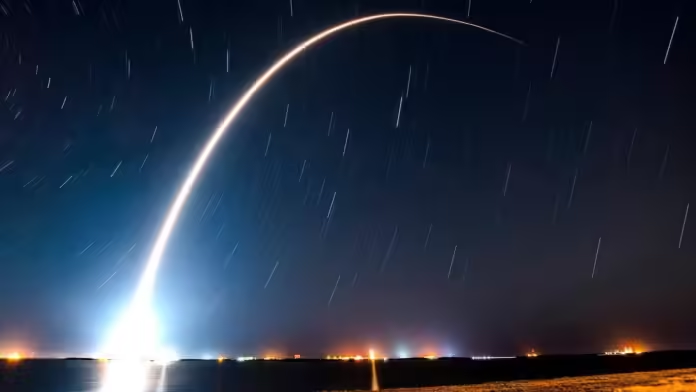Currently, thousands of satellites are parked in low orbit, some of which will eventually fail and fall into the Earth’s atmosphere. When they re-enter the atmosphere, they leave behind a trail of chemicals that erode the ozone layer. A new study warns that the proliferation of Internet satellites has contributed to a shocking eight-fold increase in harmful oxides in the Earth’s atmosphere in six years.
Not all satellites are created equal. Internet satellites have a short lifespan of around five years, after which they Losing orbit and plummeting into Earth’s atmosphereOf the roughly 10,000 satellites currently in orbit, two-thirds belong to SpaceX’s broadband constellation, Starlink.
SpaceX has launched more than 6,000 Starlink satellites into orbit, and its billionaire founder Elon Musk wants to build a larger constellation of 42,000. SpaceX isn’t the only company building a constellation in low Earth orbit. Blue Origin’s Project Kuiper The company also plans to send 3,000 satellites into space, while Europe’s OneWeb wants to build a constellation of 648. These numbers are giving us major Kessler Syndrome jitters.
Related article: What you need to know about Kessler Syndrome, the ultimate cosmic hazard
In addition to the increased risk of collisions, internet satellites rotate more frequently than their longer-lived counterparts, forcing companies to repeatedly launch replacements to maintain broadband service. As satellites reach the end of their lifespan, they release pollutants as they fall back into the atmosphere. Re-entering satellites release tiny aluminum oxide particles that can cause chemical reactions that damage the ozone layer in the stratosphere, a recent study has shown. study Published in Geophysical Research LettersAlthough oxides do not undergo chemical reactions with the molecules of the ozone layer, they do cause destructive reactions between ozone and chlorine, ultimately destroying the protective layer of the Earth’s atmosphere.
“It’s only in recent years that people have started to think that this might be a problem,” said Joseph Wang, an astronaut researcher at the University of Southern California and lead author of the new study. statement“We were one of the first teams to consider what these facts mean.”
Using a chemical composition model of the materials used to manufacture the satellites, the researchers found that a typical 550-pound (250-kilogram) satellite, with 30% of its mass made up of aluminum, would produce about 66 pounds (30 kilograms) of aluminum oxide nanoparticles (1 to 100 nanometers in size) upon re-entry. Based on this model, the study found that re-entering satellites caused the amount of aluminum in the atmosphere to increase by 29.5% above natural levels between 2016 and 2022.
The situation is only going to get worse. Research suggests that it takes about 30 years for aluminum oxide particles to drift to the same altitude as Earth’s stratosphere, where 90% of the ozone layer resides. By the time the planned constellation of Internet satellites is built in low orbit, 1,005 tonnes of aluminum will have fallen into the Earth’s stratosphere. This would result in about 397 tonnes of aluminum oxide being released into the atmosphere per year, a 646% increase over natural levels.
This was just when the condition of the Earth’s ozone layer was beginning to improve, according to a recent assessment by the United Nations Environment Programme. The ozone layer is expected to fully recover by 2066. Thanks to the International Convention for the Protection of the Ozone Layer, signed in 1987, almost 99% of ozone-depleting chemicals have been phased out since the 1980s.
Recent studies have highlighted the need for better regulation to mitigate the impact of a growing space industry that loves to launch satellites around the globe.
Want to know more about space flight? X Gizmodo’s exclusive bookmark Space Flight Page.


